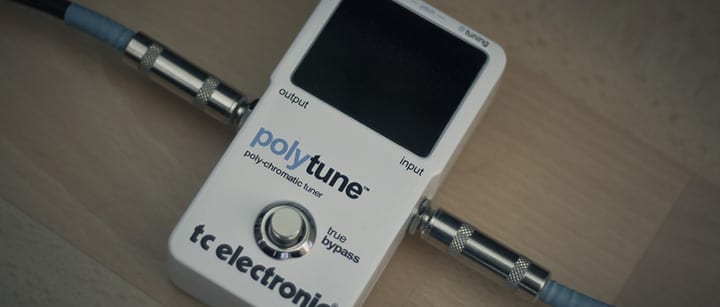 With so many options for guitar tuners out there, which type is best for you? Read on as Los Angeles, CA guitar teacher Nils B. reviews the pros and cons for several types…
With so many options for guitar tuners out there, which type is best for you? Read on as Los Angeles, CA guitar teacher Nils B. reviews the pros and cons for several types…
The abundance of options and technical terms in combination with big price differences between tuning devices can be quite overwhelming for any beginning guitar or bassist, so in this article I will give a brief overview of some of the best guitar tuners, and their respective pros and cons.
Most electronic guitar tuners share the same general concept, in that they visually display the detected pitch on some type of dial, telling you whether to tighten or loosen the string in order to reach the desired pitch. Also, most are so-called ‘chromatic tuners,’ which means they are able to display any of the 12 notes (as opposed to just the six different pitches of the open strings on a guitar), and generally do so automatically, which gives the user more information (in case a string is way off its intended pitch) and allows for easy tuning to alternate tunings.
Where they differ is mainly in their format, way of detecting pitch, and accuracy.
1) Pedal tuners
– These are designed to be used on stage, and to be activated with your foot, like other guitar effects pedals.
– Most rugged and reliable, have brightest and clearest display, and higher-end models are generally the most accurate (thanks to something called strobe technology).
– Because of this, they’re also generally the most expensive, starting at around $30 going up to $200.
– 1/4″ input only, so they do not work with purely acoustic instruments, as they don’t have a built-in microphone to pick up the signal.
– Usually powered using either a 9v DC wall wart or a 9v battery, although not all pedal tuners take a battery.
2) Handheld tuners
– These are small boxes, with a display similar to that of pedal tuners (but smaller) or occasionally using actual physical needle.
– These start around $15 but can get a lot more expensive as they get more accurate.
– Battery powered (usually 2 x AA or AAA, and tend to last quite a while).
– Work with electric as well as acoustic instruments, as they generally feature a built-in microphone as well as a 1/4″ jack input (but generally no output, unlike pedal tuners).
– They’re light and compact compared to pedal tuners.
3) Clip-on tuners
– These are relatively new, and clip on to the headstock to determine the instrument’s pitch by measuring the vibrations that are being picked up through the clip.
– Small (even smaller than handheld tuners).
– Battery powered only, but they have a decent lifespan, and some even have an auto-off feature.
– Easy to use — just clip on, or leave on your headstock permanently.
– No 1/4″ jack input, so they are not in line with whatever signal your instrument is sending out, which is a good or a bad thing, depending on the situation.
4) Virtual tuners
– These are apps that utilize the microphone of whatever device they are installed on, be it a smartphone, tablet, or computer.
– May cost you a couple dollars, but there are a couple of good free ones out there, too, such as 123 Guitar Tuner.
– You’re unlikely to forget it, as most people take their phone wherever they go.
– No 1/4″ jack input (unless you buy a separate input cable).
– Requires a host device.
In my personal opinion, because of their affordability and ease of use, a clip-on model makes for a good first tuner, maybe in addition to a (free) app as a backup. One of the big advantages of clip-on tuners is that they do not pick up ambient sounds, so they work even if you’re in a noisy environment, unlike the tuners that utilize a microphone (virtual and handheld types), but you do not need to physically connect them via a cable (like pedal and handheld types) either.
Also, it’s important to realize that however convenient electronic tuners may be, it is strongly encouraged to always try to tune by ear first. This can be challenging in the beginning, but is well worth the effort. Experienced musicians only really need to use a tuner to double check, when the environment is too noisy, or when they need to be more discreet (e.g. onstage).
 Nils B. teaches guitar, ear training, and music theory in Los Angeles, CA. He attended various schools for his training, including the Musician’s Institute in Hollywood. Nils has been teaching students since 2002. Learn more about Nils here!
Nils B. teaches guitar, ear training, and music theory in Los Angeles, CA. He attended various schools for his training, including the Musician’s Institute in Hollywood. Nils has been teaching students since 2002. Learn more about Nils here!
Photo by Antti Simonen
Suzy S.

